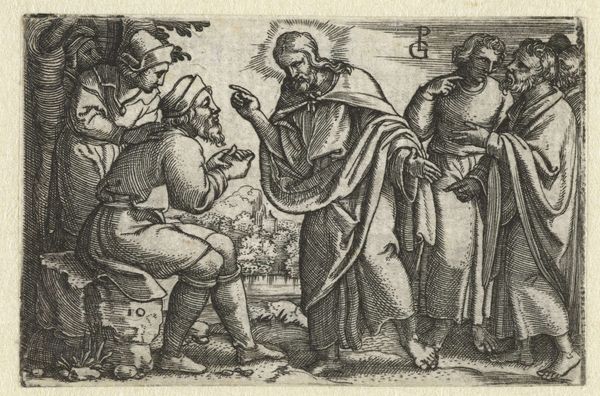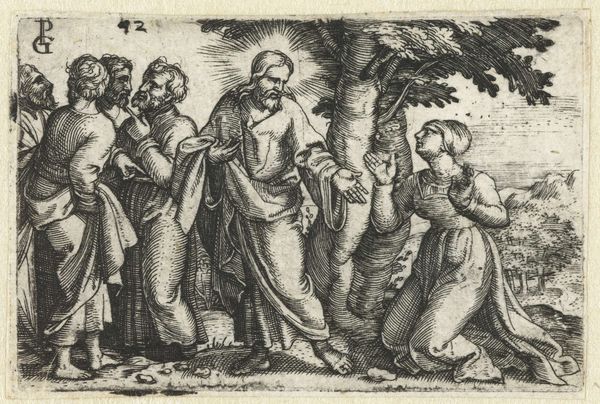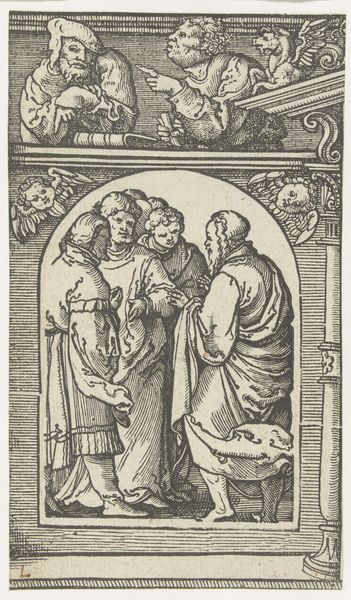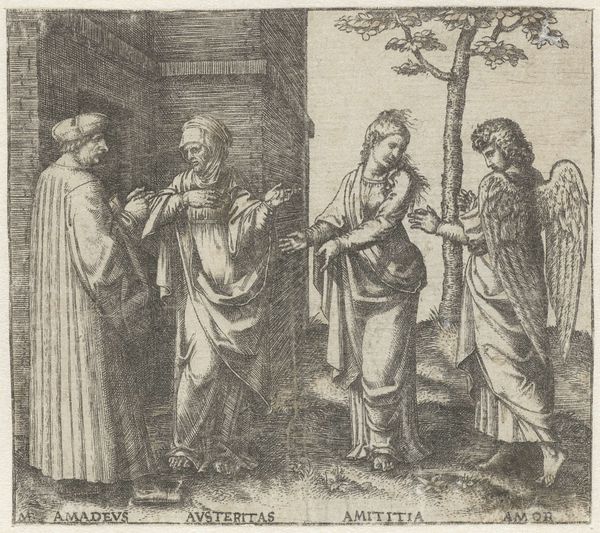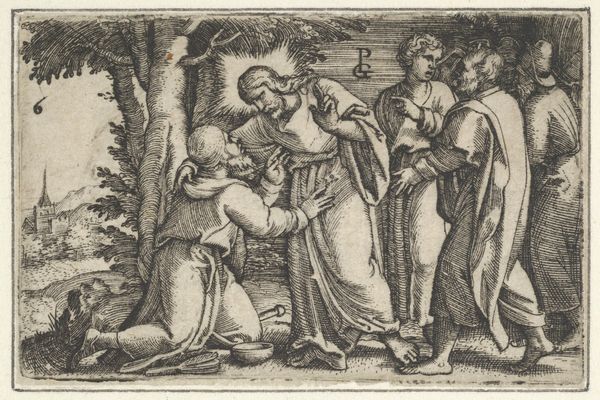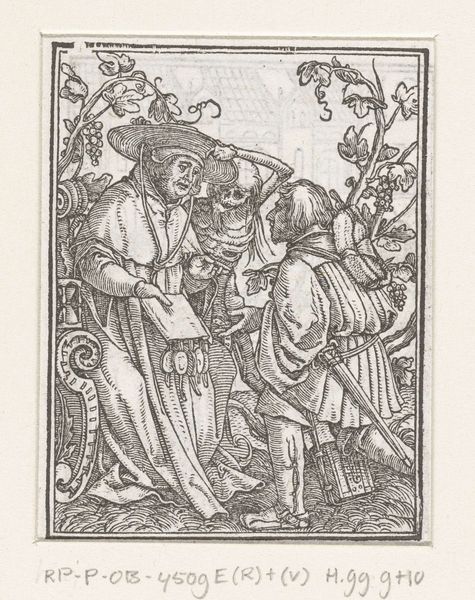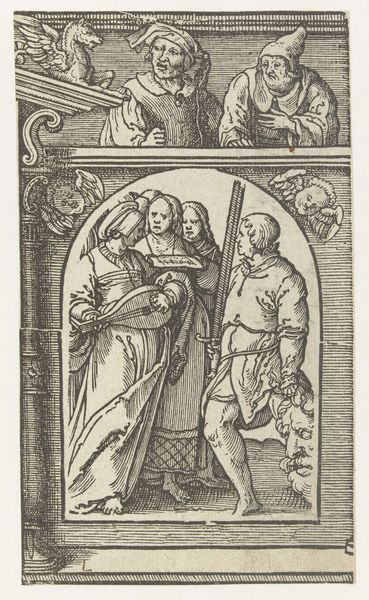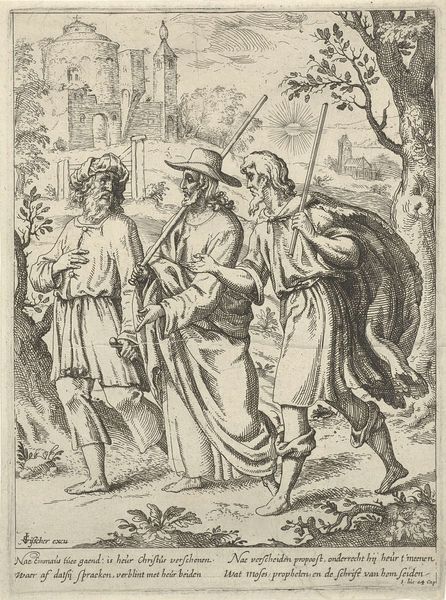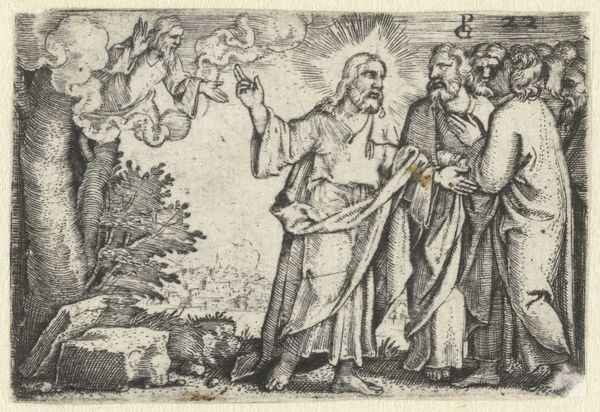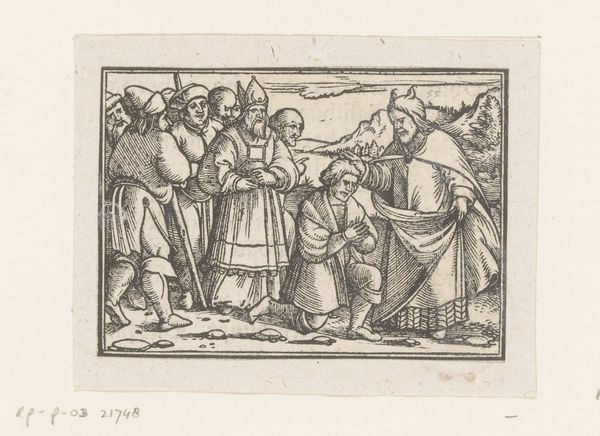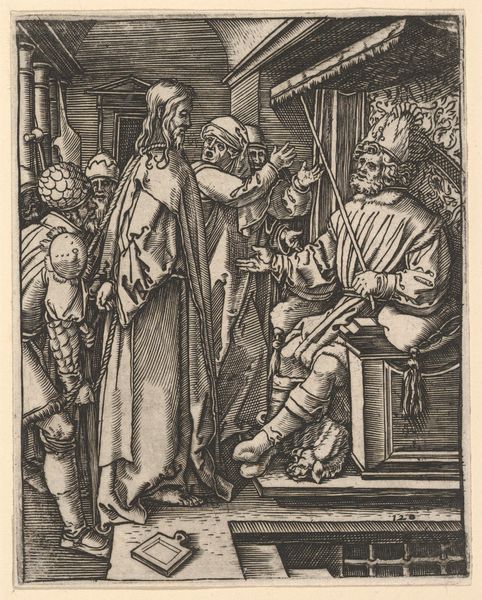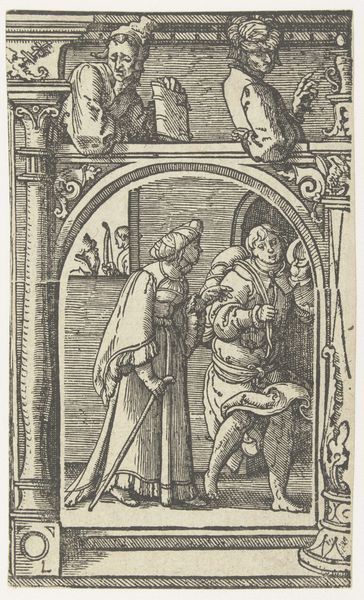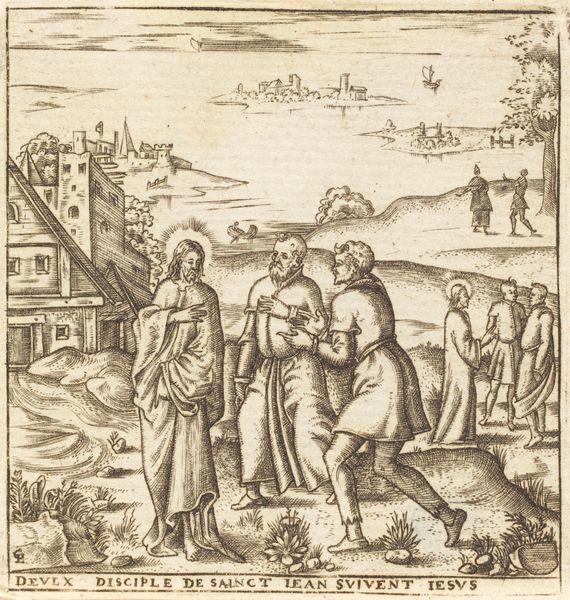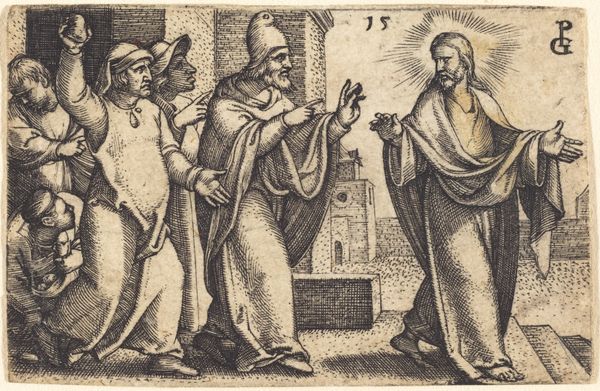
print, engraving
#
narrative-art
# print
#
pen illustration
#
pen sketch
#
pencil sketch
#
figuration
#
pen-ink sketch
#
pen work
#
sketchbook drawing
#
history-painting
#
northern-renaissance
#
engraving
Dimensions: height 39 mm, width 59 mm
Copyright: Rijks Museum: Open Domain
Curator: Georg Pencz, a German artist active in the 16th century, created this intricate engraving titled "Christ Heals the Possessed Man" around 1534-1535. You can currently find this piece at the Rijksmuseum. What are your first impressions? Editor: Stark and a bit unsettling. The dramatic poses of the figures, their limbs all angles, certainly convey distress and some kind of intervention. Curator: Pencz certainly emphasizes the drama. The Northern Renaissance style, evident in the detailed rendering and somewhat stiff figures, carries a heavy emotional charge in scenes like this. We can see Pencz, rooted in the Lutheranism of Nuremberg, grappling with depictions of faith. Notice, for example, how Pencz positions Christ at the composition's center and utilizes radiant lines from his head, making this individual a beacon for viewers and subtly indicating the symbolic role he holds for those who embrace such religious perspectives. Editor: It's also fascinating how Pencz uses costume to tell the story. Look at the possessed man, and the men holding him - they look like regular townsfolk. Whereas Jesus and the disciples have classical robes. I see that the architecture behind the group looks similarly local as well. The clothing distinctions may also give an implicit social critique that mirrors other works of the period. Curator: Indeed. Costume functions as symbolic code here, visually placing figures within distinct moral and spiritual realms. We should note that "possession," viewed through the lens of cultural memory, carries complex implications. While some see divine intervention, others historically interpreted similar episodes as medical or psychological. And looking again at the grotesque image above the possessed man in the engraving… Do you think Pencz implies one interpretation more than the other? Editor: Perhaps Pencz intended ambiguity? What I like best about this particular depiction is the lack of judgment, and lack of visual superiority. It gives this religious engraving the sense of simply capturing a strange moment in time, of a new philosophy making its way into a small community. The way that the city rises behind them almost serves as a monument itself. Curator: The power of religious art lies often in its capacity for varied interpretation, which Pencz skillfully allows here. It offers both immediate visual narratives and complex symbolism that resonate through history. Editor: Precisely. And by appreciating the visual and the contextual elements, we reveal an engaging perspective on not only religious art, but 16th century perspectives more broadly.
Comments
No comments
Be the first to comment and join the conversation on the ultimate creative platform.
